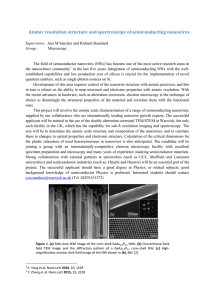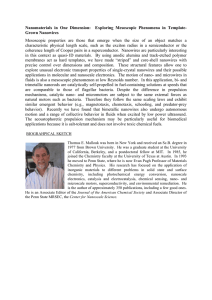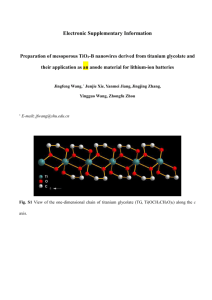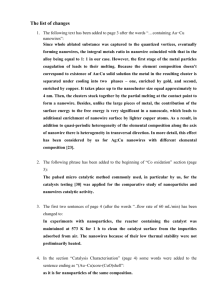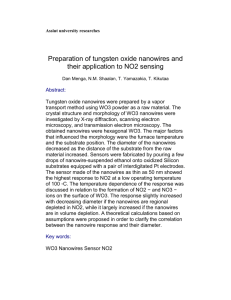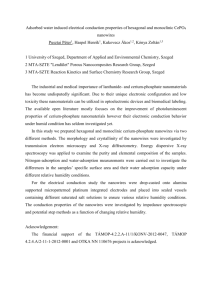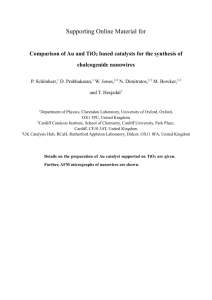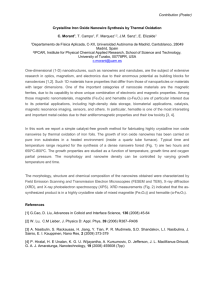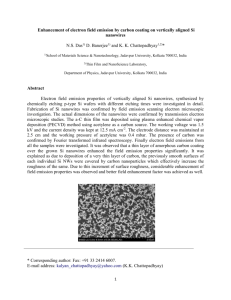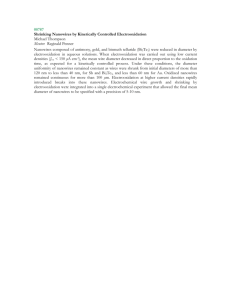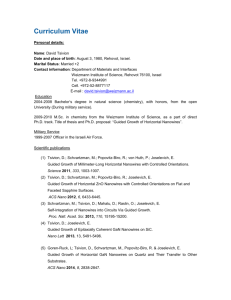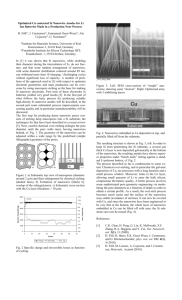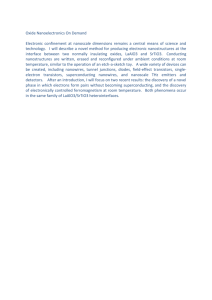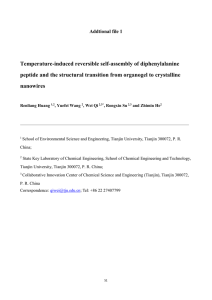Semiconductor Nanowires for Artificial Photosynthesis of value
advertisement
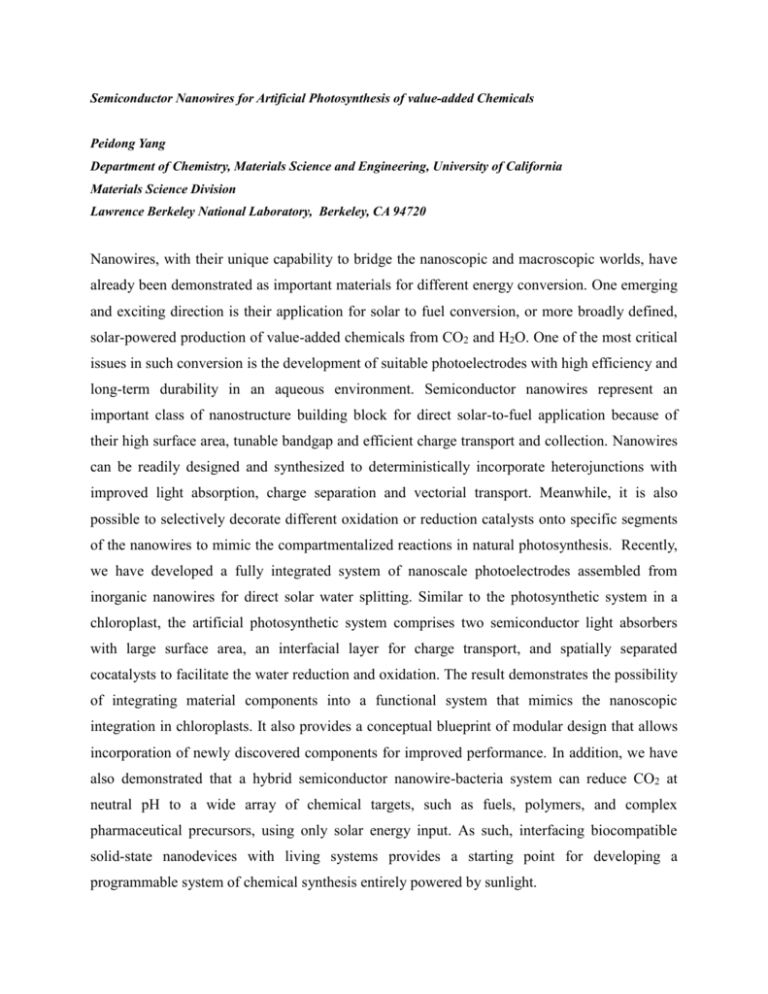
Semiconductor Nanowires for Artificial Photosynthesis of value-added Chemicals Peidong Yang Department of Chemistry, Materials Science and Engineering, University of California Materials Science Division Lawrence Berkeley National Laboratory, Berkeley, CA 94720 Nanowires, with their unique capability to bridge the nanoscopic and macroscopic worlds, have already been demonstrated as important materials for different energy conversion. One emerging and exciting direction is their application for solar to fuel conversion, or more broadly defined, solar-powered production of value-added chemicals from CO2 and H2O. One of the most critical issues in such conversion is the development of suitable photoelectrodes with high efficiency and long-term durability in an aqueous environment. Semiconductor nanowires represent an important class of nanostructure building block for direct solar-to-fuel application because of their high surface area, tunable bandgap and efficient charge transport and collection. Nanowires can be readily designed and synthesized to deterministically incorporate heterojunctions with improved light absorption, charge separation and vectorial transport. Meanwhile, it is also possible to selectively decorate different oxidation or reduction catalysts onto specific segments of the nanowires to mimic the compartmentalized reactions in natural photosynthesis. Recently, we have developed a fully integrated system of nanoscale photoelectrodes assembled from inorganic nanowires for direct solar water splitting. Similar to the photosynthetic system in a chloroplast, the artificial photosynthetic system comprises two semiconductor light absorbers with large surface area, an interfacial layer for charge transport, and spatially separated cocatalysts to facilitate the water reduction and oxidation. The result demonstrates the possibility of integrating material components into a functional system that mimics the nanoscopic integration in chloroplasts. It also provides a conceptual blueprint of modular design that allows incorporation of newly discovered components for improved performance. In addition, we have also demonstrated that a hybrid semiconductor nanowire-bacteria system can reduce CO2 at neutral pH to a wide array of chemical targets, such as fuels, polymers, and complex pharmaceutical precursors, using only solar energy input. As such, interfacing biocompatible solid-state nanodevices with living systems provides a starting point for developing a programmable system of chemical synthesis entirely powered by sunlight.




